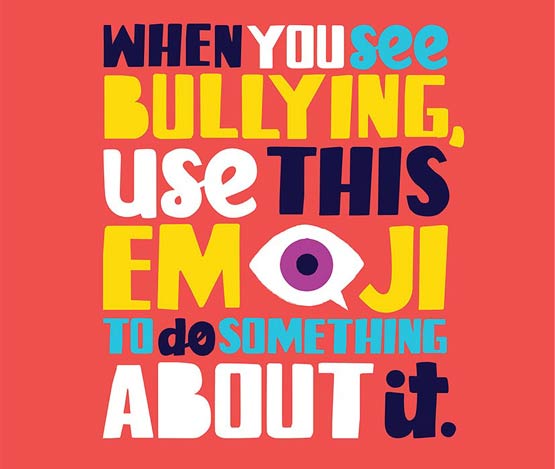
Ever since Apple revealed its list of new emoji back in September, the all-seeing eye has flummoxed sleuths across the Internet. Of all the pictograms Apple chose to introduce, this is the only one with no apparent meaning and no precedent in Unicode --- or anywhere else.
There were whispers on Reddit about Illuminati and a coming New World Order. In other corners, people wondered if Apple was making some statement about government surveillance, or giving users some coded way to avoid it.
Alas, as in the case of most juicy Web conspiracies, the truth is simultaneously more relevant and more mundane. Thursday morning, the Ad Council -- America's foremost producer or PSAs -- revealed that the emoji was developed as part of "I Am A Witness": an international effort to stop online bullying. Kids who witness online bullying can use the emoji, the thinking goes, to flag bad behavior and let bullies know that other people are watching. It became available on iOS devices Thursday.
It's a pretty revolutionary idea, all things considered: It's certainly novel, given that the all-seeing eye is the first emoji ever approved for a social cause. According to the Ad Council, lots of tech-partner platforms have also signed on in some way or another: not just Apple, obviously, but Facebook, Google, YouTube, Twitter, Instagram, Kik, Snapchat, Tumblr, We Heart It and Whisper.
Aside from the actual emoji symbol, "I Am a Witness" will include all the more traditional trappings of a PSA campaign, too: stuff like movie ads and YouTube videos and a custom Snapchat filter or two.
"We wanted to give these a teenagers a tool that's pretty flexible in however they want to use it," Cassi Newman, a director at the campaign's creative agency, told Adweek. "Whether it's bringing kindness or support to the person who's experiencing the bullying, or calling it out, or just saying 'I don't stand for it,' it's a pretty flexible symbol that can adapt to those different needs."
Those needs are, needless to say, pretty significant: According to the Centers for Disease Control, nearly 15 percent of U.S. students have been bullied on the Internet. And online abuse, as we know too well, isn't just limited to kids. Wednesday, the New Yorker's Maria Konnikova published an examination of adult bullying online, concluding that, for adults, "the Internet has made bullying both harder to escape and harder to identify."
Perhaps the addition of this handy little symbol will help with the identification part. But as the activist Soraya Chemaly points out, eliminating harassment will take far more than cutesy symbols --- particularly from the tech companies currently basking in the campaign's good PR.
"Cynic that I am, I am deeply skeptical of the ways that corporations are using it to move accountability to users," she said. But: "It does look very useful and is a great conversation starter, particularly for kids."
Comment by clicking here.
Previously:
• 10/16/15 24 words that mean totally different things now than they did pre-Internet


 Contact The Editor
Contact The Editor
 Articles By This Author
Articles By This Author
